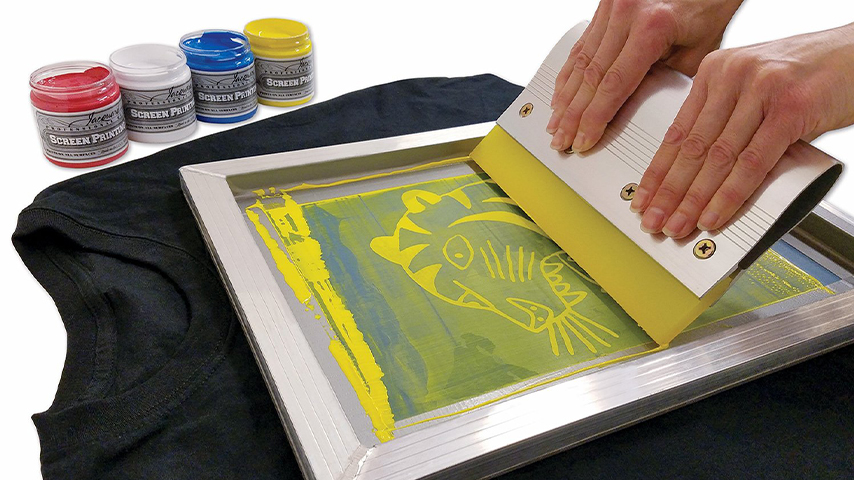Apparel printing is a booming industry with various methods available to customize garments. Among the most popular are Direct-to-Garment (DTG) printing and screen printing. Both techniques have their own strengths and are suited to different types of projects. Choosing the right method depends on factors like design complexity, order volume, and budget. In this article, we’ll compare DTG vs screen printing to help you determine which method is best for your apparel printing needs.
Understanding DTG Printing
Direct-to-Garment (DTG) printing is a relatively new technology that uses specialized inkjet printers to apply ink directly onto the fabric. This process works similarly to printing on paper, with the printer spraying the ink onto the garment in the exact pattern dictated by the digital design file.
Advantages of DTG Printing:
- High-Quality Prints: DTG printing excels at producing high-resolution, full-color designs with intricate details. This makes it ideal for printing complex images, photographs, and artwork with gradients.
- No Setup Costs: Since DTG printing relies on digital files, there’s no need for screens or stencils, which can significantly reduce setup time and costs, especially for short runs or one-off prints.
- Unlimited Color Options: DTG allows for the use of virtually any color without incurring additional costs, making it perfect for designs that require a wide color palette.
Disadvantages of DTG Printing:
- Slower Production: While DTG is excellent for small orders, it’s not as fast as screen printing for large quantities. Each garment needs to be individually loaded into the printer, which can be time-consuming.
- Limited Fabric Compatibility: DTG works best on 100% cotton garments. It can struggle with polyester or blended fabrics, which can limit its versatility.
- Durability Concerns: While DTG prints look great initially, they may not be as durable as screen prints, especially after multiple washes.
Understanding Screen Printing
One old technique for printing designs on fabric is screen printing, which requires making a separate stencil for each colour. Ink is then pushed through the screen onto the fabric, layer by layer, to build up the final image.
Advantages of Screen Printing:
- Durability: Screen prints are known for their longevity. The thicker layer of ink used in screen printing results in a more durable print that can withstand frequent washing and wearing without fading.
- Cost-Effective for Large Orders: Once the screens are created, screen printing becomes very cost-effective for large orders. The setup costs are spread out over the quantity, making it a cheaper option per unit for bulk printing.
- Versatility: Screen printing works well on a wide range of fabrics, including cotton, polyester, and blends. It’s also effective for printing on items like tote bags, hoodies, and more.
Disadvantages of Screen Printing:
- Setup Time and Costs: The need to create a separate screen for each color in the design means that screen printing can be time-consuming and expensive for short runs or complex, multi-color designs.
- Limited Color Options: Each color requires its own screen, so designs with many colors can become expensive and labor-intensive. This makes screen printing less ideal for designs with intricate color details or gradients.
- Environmental Concerns: Traditional screen printing inks can be less eco-friendly, although water-based and eco-friendly inks are available as alternatives.
Comparing the Two Methods
When deciding between DTG and screen printing, consider the following factors:
Order Size:
- DTG: Best suited for small orders or one-off prints, as there are no setup costs and the process is relatively quick for single items.
- Screen Printing: More cost-effective for large orders due to the initial setup costs being offset by bulk production.
Design Complexity:
- DTG: Ideal for intricate designs, photographs, or any artwork with multiple colors and fine details.
- Screen Printing: Better for simpler designs with fewer colors, especially when durability is a priority.
Material and Fabric:
- DTG: Works best on 100% cotton garments and may struggle with other fabrics.
- Screen Printing: Offers more versatility in fabric choices, making it suitable for a wider range of garments and accessories.
Durability:
- DTG: While the initial print quality is high, it may fade faster over time compared to screen printing.
- Screen Printing: Renown for its long-lasting quality, it is an ideal material for garments that will be worn and cleaned often.
Budget Considerations:
- DTG: More cost-effective for small orders due to no setup costs, but can be expensive for large orders due to the time involved in printing each item individually.
- Screen Printing: Higher initial costs but becomes more economical with larger orders.
Conclusion: Which Method is Best?
There’s no one-size-fits-all answer to which printing method is best—it depends on your specific needs. If you’re looking to produce a small number of highly detailed, colorful designs, DTG printing might be the best option for you. On the other hand, if you need to produce a large batch of simple, durable designs, screen printing is likely the way to go.
Ultimately, the choice between DTG and screen printing should be based on the nature of your project, your budget, and the specific requirements of your design. Both methods have their place in the apparel printing industry, and understanding their strengths and limitations will help you make an informed decision.
